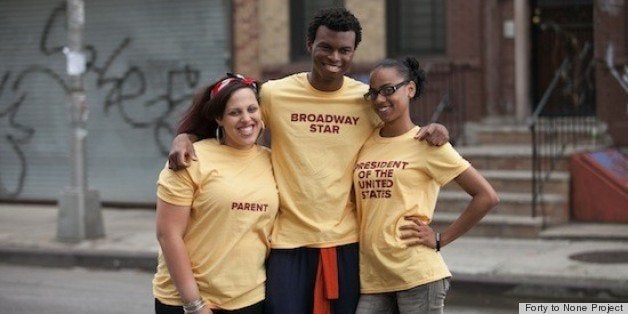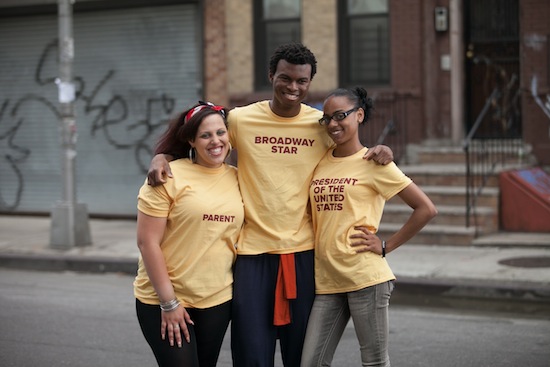

When I tell people that the Forty to None Project is working to end homelessness among lesbian, gay, bisexual and transgender (LGBT) young people, I am most often met with: "So... how are you going to do that?"
In the coming months, I will continue to write about our work at the Forty to None Project, as well as the work of innovative organizations around the country that are having a positive impact in their communities by meeting the needs of LGBT young people experiencing homelessness.
Most solutions to the problem of youth homelessness center around increased shelter services. We cry, "More beds! More beds!" And we do need more beds, but we also need more than more beds. For example, we need a strategy to tackle the root causes of LGBT youth homelessness so that we can work to prevent it, rather than only reacting to it. We need to do both. In addition to short-term shelter beds, which get young people off the street temporarily, we need long-term, ongoing and affirming care. At the Forty to None Project, we have established a three-tiered approach to addressing LGBT youth homelessness that is infused into and informs all aspects of our work. This approach is multidimensional and holistic; each part is important in its own right but ineffective without the others. I will explain each tier through the story of one amazing young person I know, Angel.
I met Angel when she was 17. She had recently been kicked out of her house after coming out to her mother as transgender. Her mother said that Angel could not continue to live at home because she operated a daycare program out of their house and was afraid that she would lose her business if people in the neighborhood knew. Her mother's rejection cut Angel off from her family, her neighborhood and her community. Is there a way that this could have been prevented?
Our first tier is promoting acceptance. Through promoting acceptance, we can prevent some LGBT youth from becoming homeless. We need to reach families, youth and communities before young people come out and provide them with information about the negative outcomes associated with identity-based rejection and homelessness. If Angel's mom had received this kind of information, maybe, just maybe, Angel wouldn't have been kicked out. One way that we are working on promoting acceptance at the Forty to None Project is through collaborating with leading universities to develop research examining the root causes of rejection. Once we understand the root causes of rejection, we can craft effective strategies for reaching families and communities before their young people even come out.
Angel was kicked out, though, and she moved into a shelter program. While there, she reestablished contact with her mother, who told her that she could come to visit, but only between the hours of midnight and 5 a.m., so that no one in the neighborhood would see her. Program staff found this upsetting and encouraged Angel not to travel to the neighborhood during those hours, out of concern for Angel's physical and emotional safety.
Our second tier is targeted family assessment. We need programs that have the capacity to work with young people and their families in order to thoroughly explore options for reunification and/or relationship building. Capacity means that programs must be provided with the resources (training and financial support) to train their staff on family assessment and intervention techniques. If staying in the home is not an option, then programs can support relationship building within the family, family networks and community. An assessment of family and community networks may yield an affirming home for a gay or transgender young person. At the Forty to None Project, we are working with agencies across the country to identify and disseminate best practices for supporting families and communities and preventing LGBT youth homelessness.
Family reunification will not always be an option; sometimes other issues are happening in the home. Sometimes being out of the home is the safest and only viable option for young people.
Angel, like other young people who can't return home, moved between shelters and transitional living programs for the next few years. She didn't stay at some for long, because she didn't feel safe or affirmed in her identity. Though she did not have a stable living environment, she finished high school, secured a minimum-wage job and began saving money to live on her own. These tasks are challenging for many young people, especially for those without financial resources or family support.
Our third tier is affirming and competent care. Some young people will need ongoing support and assistance to make it through the transition to independent adulthood. The majority of young people in the country do not have access to LGBT-specific shelter programs. Based on our research with the Palette Fund and the Williams Institute, we know that 76 percent of homeless LGBT youth are accessing mainstream shelter services. It is imperative that all programs know how to work with all youth. One piece of our work in this area is the development of an inclusive system of training and accountability. We will not only ensure that agencies across the country receive quality training, but we will also conduct site assessments and score agencies so that we can help ensure that LGBT young people will be safe and affirmed wherever they go for services.
Five years after I met her, Angel got the keys to her own supportive housing apartment in New York City. Though the journey took some time, Angel's story has a successful ending. With targeted prevention and intervention strategies, we can shorten the duration of the journey for other LGBT young people experiencing homelessness.
